#historical academics
Text
Podcast: Weird Medieval Guys
Another podcast, because it's consumed my brain over the last week.

Weird Medieval Guys started as a Twitter account (go off, Musk), but is now also a bi-weekly podcast starring Olivia (the Twitter creator) and Aran (the historian she bribed with a platform to rant about Constantinople). Every couple of weeks, they gather together on Olivia's living room floor to academically gossip about medieval life, loves, and nonsense.
Because people have always been nonsensical, and that's amazing.
I found it through another podcast that I will one day do a post about (I need to... come to terms with why I love it) called We Can Be Weirdos, in which Olivia came on and caught my attention with her passion for the legal debates people got into about heraldry, and her willingness to admit that medieval people were just as petty and ridiculous as we are now.
Because that's the thing, and which I think this podcast shows so well: people have always just been people.
The world we exist in has evolved. Technology has marched on, our ways of interacting with each other have changed, and we have different values, different things we consider important, but we're still the same, really. We think of the past as this noble and dirty and incorruptible space, but people were making sex jokes and lame puns for a hundred thousand years. We aren't special just because we can blast our lame humour to seven billion people at a time.
But anyway.
Each episode of the podcast takes the form of a loose essay, Aran lecturing Olivia (or occasionally vice versa) on some topic about the medieval period, and don't get me wrong - they are lectures. There are stupid jokes, Aran loves to play different characters, Olivia giggles constantly, and the point of each one is that medieval people were Just Like Us, but Aran is an academic talking about research. Yes, his area of expertise is a later period, but the skills remain.
And to be clear, I am a recovering cultural studies student who until recently has been out of academic life and away from other academics for over a decade. But I suspect this is not a podcast you can walk into without some academic-adjacent background. They discuss articles and a lot of their humour is based in inference and the kind of irony you see in people who debate reality for a living.
But they are also redditors, and Twitter natives, and talk about their subjects as 'based'. Aran loves to call people King and Queen. They bring their subject matter to the now.
The most recent podcast was about medieval Welsh bards, and they read out a rap (flyte) battle between two of them (Olivia's bard totally won, I don't care what you say), and finished on the DIRTIEST poem I have ever heard (seriously, ugh), and it taught me a lot about Wales' history, which I've never really known much about, so thank you for that. But it was great to hear all this poetry and these poets and put them in a context where you can strip back the language and see them for the frustrated, young, often horny, very human people they were. Also I loved the owl poem and must search it out because I grew up next to koala tress and boy, I feel you.
The episode before that was about medieval animals, and while it was fun to hear about hedgehogs and the bestiary, it also contained a beautiful insight into why we use animals as narrative devices. The only downside is that I'm still on the edges of the Hellverse fandom and started analysing furry culture and honestly, no one needs that in their life...
But my FAVOURITE episode so far is part two of their Constantinople episode, where they described the Ottoman leader Mehmed as so... painfully human. Even as his soldiers ransacked a once-glorious city and he chased a mad dream, he was just so lost and passionate and terrible and... Aran described him so beautifully, I was just swept up in the story.
So yes. Although there are a few hiccups along the way (please please please go back and fix the episodes with the overlapping voice tracks it hurt my ears so bad), if you have even a passing interest in history or culture or what makes humans human, check out this podcast.
Because we're just people. We've always just been people. And that's amazing.
#podcast#weird medieval guys#historical academics#people as people#we're just innocent men#that's unrelated unless you think about it too hard#seriously though aran's obsession with constantinople gives me life#I didn't catch the potato joke but I get it#you're dorks and I love you
3 notes
·
View notes
Text
people who don't study history will simply never understand the joy of reading historian beef. there's nothing like it
#when they're reviewing each other's work and they're just SHITTING ON IT????? wonderful#when you can tell the historian HATES whichever historical figure(s) they're writing about? incredible#one thing we must remember is that historians are just academic gossipers xx#what is JSTOR for if not to read the DRAMA#reading an absolutely SCATCHING rebuttal of an article on New England migration and honestly??? having a wonderful time#sometimes the history student just jumps out#history
4K notes
·
View notes
Text

The Sleep of Sorrow and the Dream of Joy by Raffaelle Monti
Victoria & Albert Museum, London, 02 IX 2017
#art#sculpture#classical art#art history#historical art#19th century art#marble sculpture#my photography#victoria and albert museum#v&a#museums#art gallery#art galleries#museum#history#dark academia#dark art#dark aesthetic#dark academism#dark academia art#goth aesthetic#goth art#gothic art#Gothic
5K notes
·
View notes
Photo

Magdalene Grieving (1605) by Caravaggio.
#classical paintings#baroque#dark aesthetic#arthistory#academic art#aesthetic#art history#classical art#classic art#renaissance#painting#art#historical painting#artwork#dark academia#oil painting#dark art#fine art#magdalene grieving#caravaggio
11K notes
·
View notes
Text

Greek Girls Picking Up Pebbles by the Sea, Frederic Leighton, 1871
#art#art history#Frederic Leighton#Lord Leighton#historical painting#ancient history#Ancient Greece#genre painting#genre art#British Aestheticism#Academicism#Academic art#British art#English art#19th century art#Victorian period#Victorian art#oil on canvas#Pérez Simón Collection
1K notes
·
View notes
Text

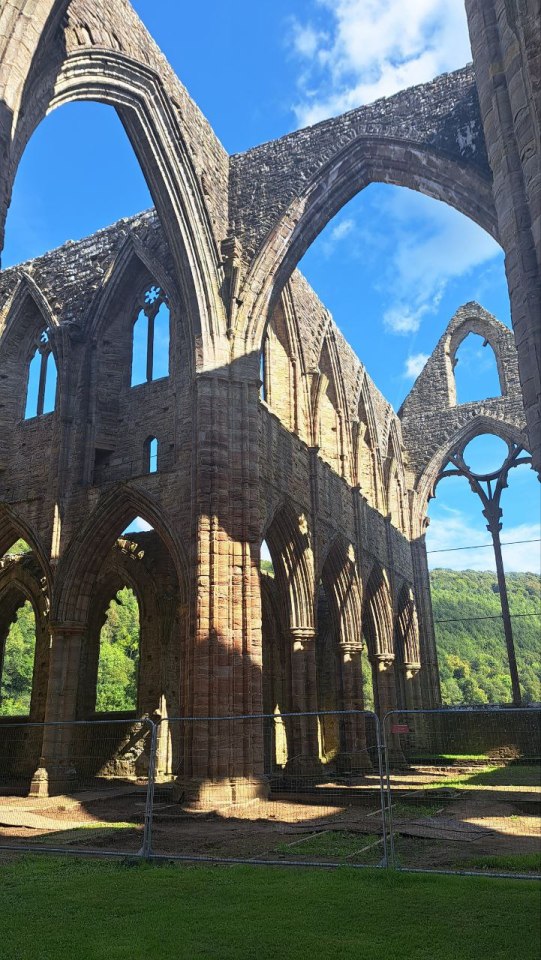



The enormous ruins of Tintern Abbey in Monmouthshire in Wales (Cymru). These are the remains of various stages of construction between 1131 and 1536. It only fell into disrepair after the dissolution of the Monasteries under Henry VIII.
#dark academia#light academia#classical#academia aesthetic#escapism#academia#books and libraries#classic literature#books#architecture#place#travel#photography#Tintern Abbey#Monmouthshire#Wales#Cymru#ruins#despair#history#historical#royal core#cottage core#aesthetics#academic#artistic#mood#vibe
297 notes
·
View notes
Text
It was also such a choice to not make any part of this episode from Eddie’s POV. We only saw Eddie through Buck’s eyes here when he’s seething with jealousy and hurt and loneliness and I found that a very engaging and clever way to build tension not just in this episode but for the next ones too when we do get to see Eddie.
#seriously i’m so so happy and this is historical but i also want to academically study this episode#911 spoilers#911 abc
347 notes
·
View notes
Text

#oxford#oxford street#Oxfordshire#graveyard aesthetic#graves#graveyard#cemetery#old cemetery#cemetary#historical#dark photography#dark academism#light academia#gothic academia#gothic#urban gothic#academia#dark academia#eerie
334 notes
·
View notes
Text
Broke my tumblr silence just to sprinkle a little sad into your day! You are welcome!
#amrev#amrev fandom#american revolutionary war#history#american history#alexander hamilton#hamilton#historical hamilton#historical alexander hamilton#historical john laurens#john laurens#angst#lams#lams angst#historical lams#historical letters#academic history#tiktok trend#when your card declines at therapy
120 notes
·
View notes
Text
Let's talk costuming: Avaunt!

So I think we can all agree that Aziraphale looks his most traditionally angelic in the Job minisode, no? In fact, all of the angels' costuming increases in drama for this particular episode. This is, obviously, a very deliberate choice on the part of wardrobe, so let's discuss.
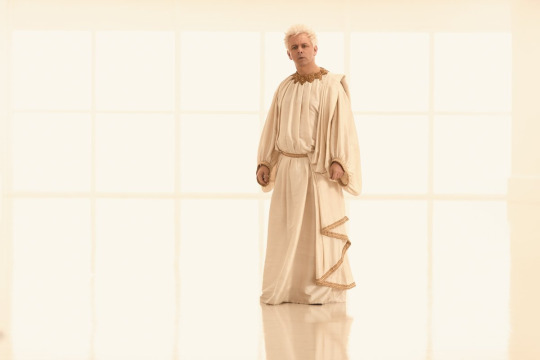
On a technical level, the biggest thing that stands out to me about this fabulous robe is the draping. Oh, the draping. It feels like a classic angel 'fit because on a very fundamental level, it is. A lot of what we think of as angelic draws on Renaissance artists' depictions, with flowing robes, fluffy wings, and glimmering halos. In art from this era, there is a strong attention to detail on the natural flow of fabrics that makes Renaissance sculpture so breathtaking, such as here: (The Ecstasy of St. Teresa, Bernini, 17th century CE)

It's this ability to make solid marble look like fine silk rippling with movement that leaves such a strong impression in my mind when I look at these kinds of works.
In painting, too, there is a similar effect. Something about the material culture of the Renaissance really lent itself to this style, perhaps fueled by the rise in new textile luxuries that occurred in vaguely the same period. This is seen especially strongly for angels, such as in the sculpture above, and in this painting: (The Annunciation to the Virgin, Botticelli, 15th century CE)

There's a stark contrast between the dress of the two figures. The virgin Mary is no less ornamentally or expensively dressed, but her style is rather minimalistic next to the angel's voluminous robing. It paints a very clear impression of angelic dress, and the designers for Good Omens would have been aware, in at least a small way, of the art history precedence for such a thing.
The poof of the sleeves, the tucks down the front, the little belt with the train tucked in, the gathers, the weight of the fabric, everything about this robe is constructed to carefully recreate the rather fantastical imagery of renaissance art. It's not necessarily an easy texture to nail down, given that the artists themselves had no concerns of gravity, comfort, or the way it would look in actual 3d motion, while our brave costumers were dealing with all three as well as a budget, time constraints, and the constant consideration that white fabric just gets dirty so easy.
Here's some of the other angels as well, so you can see how theirs reflect those same dramatic themes.

And then, of course, when costuming a show you have a second question: What does this mean for our character? Or rather, we know how, but WHY did they make him look so traditionally angelic?
Well, thematically, the Job minisode centers around Aziraphale's struggle with being a good angel and Crowley's struggle with being a good demon. Aziraphale is learning how to be an angel that follows along with heaven as far as we can, and he's so terribly torn up about it. He spends a lot of his time fretting about doing what's expected demanded of him, even if perhaps he doesn't believe it to be the right choice. Natural, then, that he should look the part of the perfect angel whilst sorting out these ethereal woes.

Crowley even draws attention to it himself, giggling a bit at the suggestion that Aziraphale, with his fluffy hair and flowing angelic garb, could possibly become a demon. And it is a rather silly mental image; the garment itself would be comically silly in really ANY other context at all. In the same manner, his performance of angelic archetype borders on excessive:

He's trying so desperately hard here to be the angel he wants to and is supposed to be. He's dressed the part, he's using his big scary angel voice, but deep down he's clinging to an identity that doesn't quite fit.
(You'll notice in this shot the distinct difference between his and Crowley's dress on the level of silhouette as well as color. We see this a lot from the two of them, but with the points I made above it felt worth pointing out in this particular scene)

Here at the end, as he's coming to terms with the cracks in his heaven-given identity, his robe is largely in shadow, blurring out its startling whiteness. We do not see him dressed this way again. (He continues to wear white, obviously, but from here on out his style of dress mimics the human trends of the time rather than that classical angelic imagery)
#good omens analysis#art history#sometimes I am an academic weapon but only when it doesn't count#aziraphale good omens#job minisode#costume design#good omens#good omens costumes#aziraphale#michael sheen#historical clothing#good omens 2#neil gaiman#also I love the little human touch of that little bend in his fucking sleeve cuff when he says avaunt#like that's a fully real piece of clothing that he's wearing not something animated and sometimes you just have to sit and appreciate it#it just makes me laugh a little#I'm sure someone somewhere agonized over it and wishes they'd fixed it but it just feels so human to me
339 notes
·
View notes
Text


#moodboard#mood#aesthetic#dark academia#academia#light academia#studyblr#aesthetic moodboard#pinterest moodboard#dark academic aesthetic#light acadamia aesthetic#fairycore#ethereal#historic aesthetic#cottagecore#angelcore#dreamy#soft aesthetic#fairytalecore#naturecore#flowercore#nature aesthetic#warmcore#princesscore#grandmacore#cottageblr#historical aesthetic#faecore#cottage aesthetic
390 notes
·
View notes
Text
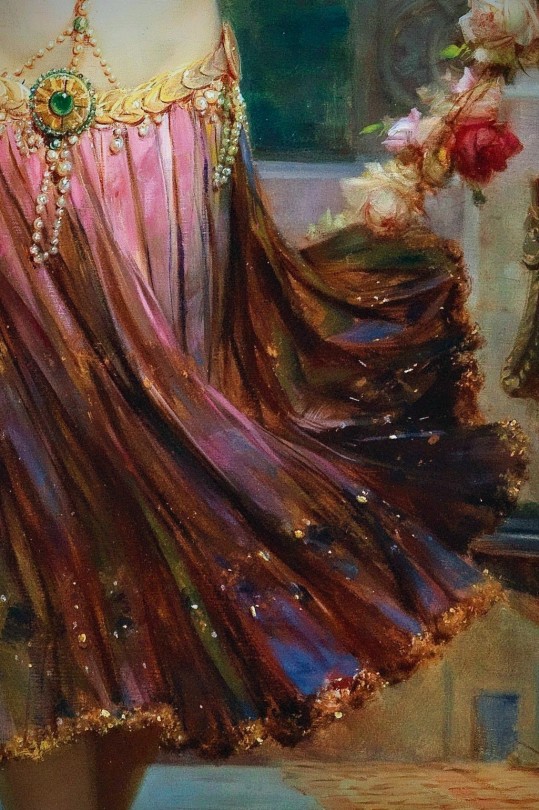

Hans Zatzka
Austrian, 1859-1945
The Belly Dancer (details)
#art#art detail#painting#classical art#hans zatzka#painting detail#art history#historical art#austrian art#art academia#women in art#fashion history#historical fashion#fabrics#textiles#20th century art#academic art#artwork#oil painting#orientalism#zatzka#orientalist art#academism#dark academia#dark academia art#dark academia aesthetic
6K notes
·
View notes
Photo

Two Young Women Kissing (1790s) by Louis-Léopold Boilly.
#art#art history#arthistory#painting#oil painting#oil paintings#classical paintings#classical art#classic art#fine art#renaissance#baroque#dark academia#light academia#dark aesthetic#academic art#historical painting#two young women kissing#louis-léopold boilly
10K notes
·
View notes
Text

Faithful Unto Death, Edward Poynter, 1865
#art#art history#Edward Poynter#Edward John Poynter#Sir Edward John Poynter#historical painting#ancient history#Ancient Rome#Roman Empire#Pompeii#genre painting#Academicism#Academic art#British art#English art#19th century art#Victorian period#Victorian art#oil on canvas#Walker Art Gallery
2K notes
·
View notes
Text
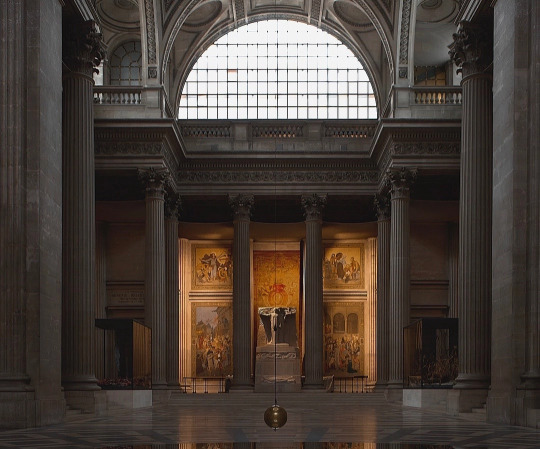
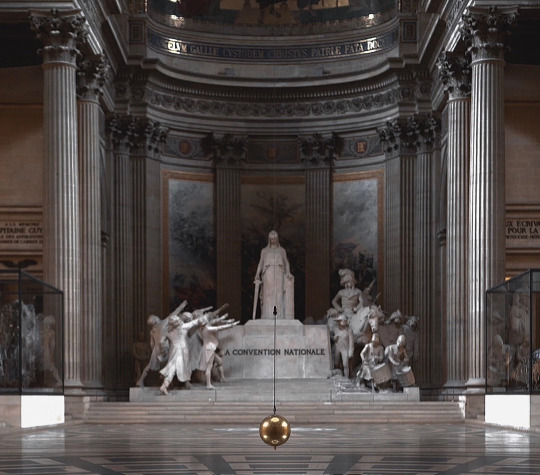


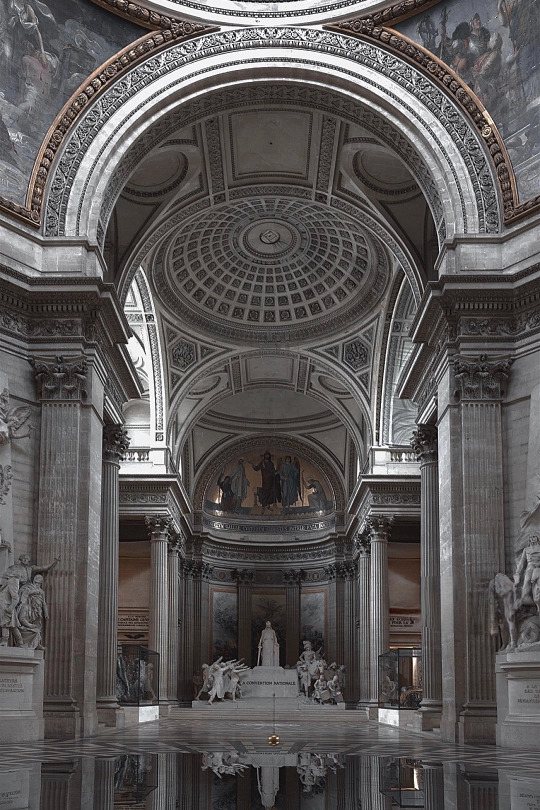
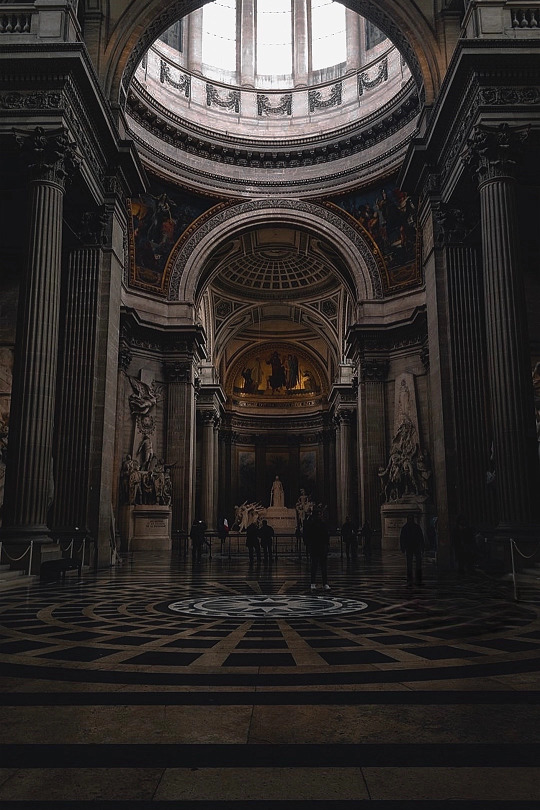
#dark academia#light academia#classical#academia aesthetic#academia#escapism#books and libraries#classic literature#books#architecture#interior#historical#place#france#royal core#cottage core#aesthetics#academic#period era#mood#vibe#beautiful#tumblr
397 notes
·
View notes
Text

Carte de visite of two 19th century Swiss gentlemen thoroughly prepared to splish and also perchance to splash in their super stylish rain gear, dated on back 1869
#true precipitation professionals slaying in the rain#I wonder if they’re wearing the standard three piece suits under there#please sirs can we have a 19thc rainy day striptease? out of academic curiosity#19th century#1800s#1860s#1860s fashion#historical fashion#fashion history#19th century fashion#men's fashion#menswear#19th century photography#carte de visite#cdv#19th century men#vintage men
336 notes
·
View notes